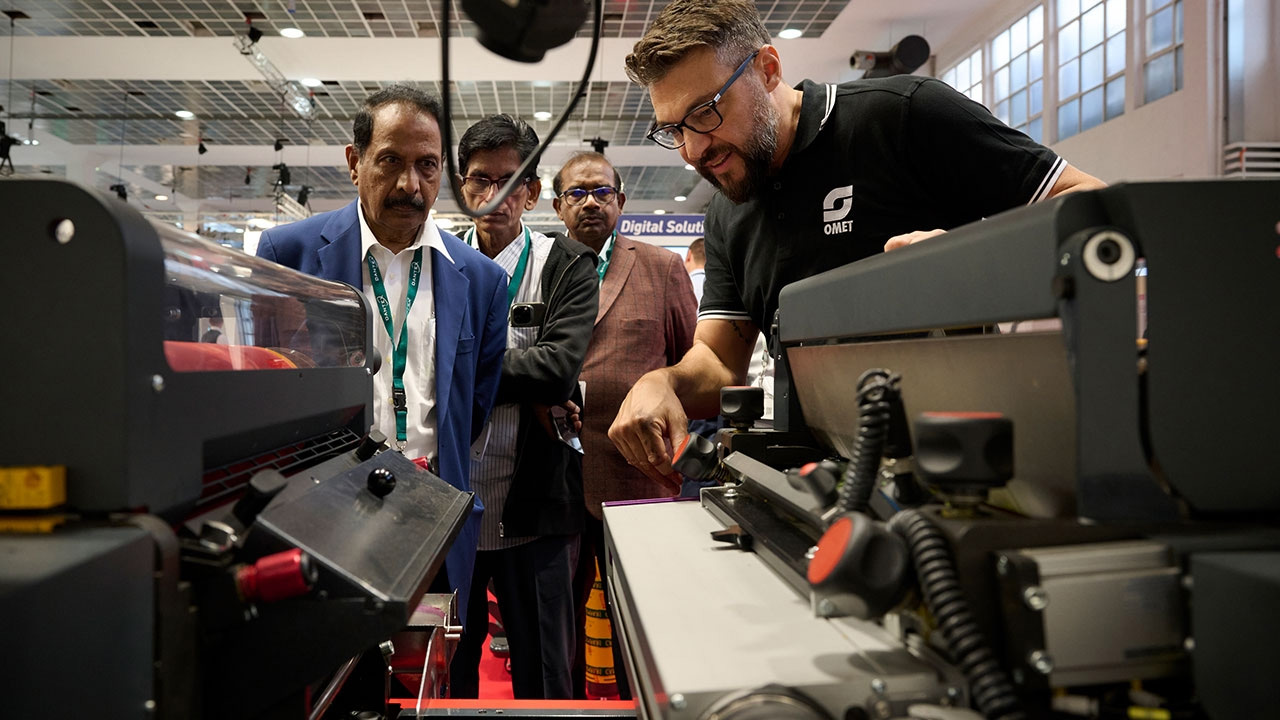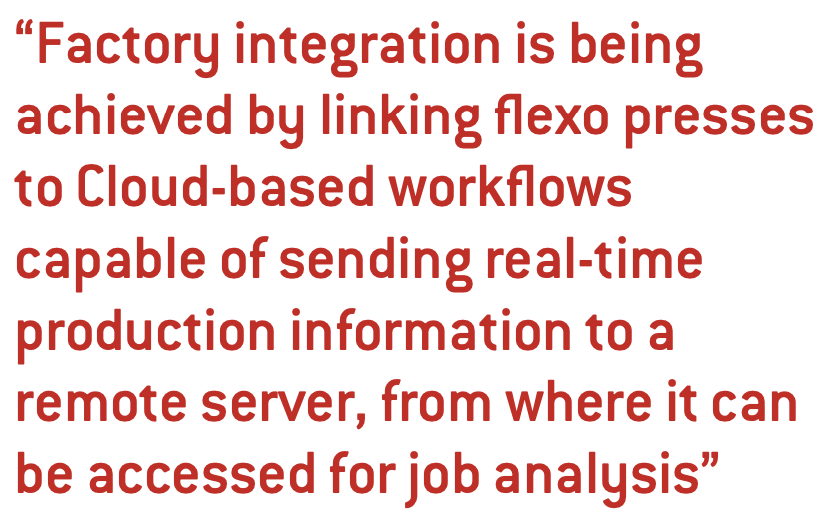- Home
- About Us
- Products
- Services
- News
- Contact

Flexo emerges stronger from Labelexpo
When no flexo presses were shown at Labelexpo Americas in Chicago last year, some commentators asked if flexo was dead, finally superseded by a generation of faster, wider and more productive digital presses.

Labelexpo Europe 2023 gave us the definitive answer. Flexo is not dead – but it is evolving in interesting new directions.
Firstly, wider, mid‐web 26in presses are emerging as powerhouses for diversification, giving converters the option to move into new markets, and to be more efficient in markets they already operate in. They give converters access to the more common larger formats of flexible packaging, shrink sleeve labels and in‐mold labels. At the same time, the high degree of automation makes converters better able to compete in commodity‐based markets, where overall cost‐per‐label is the critical factor. That may include, for example, non‐embellished pressure‐sensitive food labels and wraparound labels.
Converters who have purchased these wider, faster machines for PS label work can either use trolley‐based fast‐change die‐cutting modules or can print at high‐speed roll‐to‐roll and either slit on the press and finish off‐line, or both slit and finish off‐line. This workflow is particularly interesting with expanded color gamut (ECG) ink systems, as it allows flexo converters to print multiple SKUs across the same web and finish them as individual jobs – something offset printers have been able to do for a long time.
One issue facing label converters diversifying into flexible packaging has been brand owners’ reluctance to accept UV inks for indirect food contact applications because of the risk of uncured photo‐initiators migrating through non‐barrier containers.
But there were interesting developments here too at Labelexpo Europe.
After extensive testing, the initial results of the UVFoodSafe project were unveiled. The final product will be a set of guidelines laying out best practices across the whole UV flexo flexible packaging workflow, from designs that minimize migration risk, to standardization and process measurement ‐ in particular accurate measurement of UV dose ‐ maintenance and testing protocols.
Narrow web developments
For the more traditional ‘narrow’ web‐width flexo, Labelexpo Europe also showed an interesting direction of travel. It seems fair to say that we have reached a technology peak in terms of press automation and speed, so attention is now turning to factory integration, flexibility and efficiency.
Factory integration is being achieved by linking flexo presses to Cloud‐based workflows capable of sending real‐time production information to a remote server, from where it can be accessed for job analysis across a range of data points from downtime to average speed, ink consumption and material waste. All this helps managers to identify points of weakness in work practices and increase the overall efficiency of the converting operation.
Added flexibility is being achieved by the integration of digital printing and embellishment into the flexo press line, either as a retrofit module or rail‐mounted.
Both Mark Andy and Gallus took this trend to a logical conclusion by allowing entire press flexo lines – the Pro Series and ECS respectively – to be field‐upgradable to hybrid presses by installing a digital print engine (respectively the DMax Pro and DPU) directly into the existing flexo press. Domino meanwhile premiered its N610i‐R digital retrofit module targeted at OEMs and converters looking to add digital printing into existing flexographic presses.
Press‐wide digital print bars have been available for some time for flexo presses, replacing, for example, a flexo or screen white or a black plate with a variable imaging digital equivalent.
But at Labelexpo we also saw digital embellishment modules installed on flexo press lines, with high‐build digital varnish units on both a Nilpeter FA‐17 and Omet KFlex, while Actega announced it is looking for OEM partners including flexo press manufacturers for its Ecoleaf digital metalization technology.
So, we see the flexo press evolving into a ‘digital combination’ press, in exactly the same way flexo took on board processes like rotary screen and hot stamping in the 1990s. Digital becomes just another combination process technology.

It is also worth noting that the increased automation of flexographic print and converting units is seen in the growing sophistication and efficiency of hybrid presses. Take as an example the latest generation of Nilpeter‐Screen hybrid press which uses all the automation advantages of Nilpeter’s latest FA flexo platform so that, for example, sleeve changes can be made on the fly, greatly increasing the utility of the entire hybrid line.
So flexo, far from being dead, continues to evolve in ways that take on board the requirement of label converters to diversify into new packaging formats and the added value possibilities held out by digital processing. Add in Cloud workflow integration and you have a technology that continues to reinvent itself.
-
4th Floor,No.428 Wenzhou Avenue,Puzhou Street,Longwan,Wenzhou,China,
-
+86-577-66688057
+86-18058846873 -
Copyright © 2019 CHINA . Wenzhou Andy Printing Machine Factory and Suppliers.




